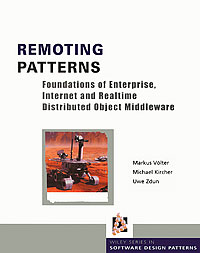By both building on and seamlessly integrating with 00 and component-oriented paradigms, distributed object middleware has made the development of distributed applications easier than ever in the past. But extra requirements -performance, predictability, scalability - can increase the complexity and therefore the challenge of building robust distributed software. This is when details of the distributed object middleware suddenly become critical and must be understood thoroughly. And this is also when developers, consultants, and especially software architects, need to understand the inner workings of the middleware products they use - not just their APIs.
This book explains the internal structure and behavior of distributed object middleware in an easily comprehensible form: patterns.
Since practically all available distributed object middleware systems are built on the same set of patterns, understanding the patterns will provide developers with a thorough and deep understanding of how a particular middleware works. To illustrate the patterns, the book includes three technology projections for:
The pattern language in this book addresses everything from basic and elementary aspects through lifecycle- and resource management to asynchronous invocations. The combination of patterns, their interactions, and the technology projections even enable you to create your own distributed object middleware, in case existing solutions fail to address your specific needs. Это и многое другое вы найдете в книге Remoting Patterns (Markus Volter, Michael Kircher, Uwe Zdun)
